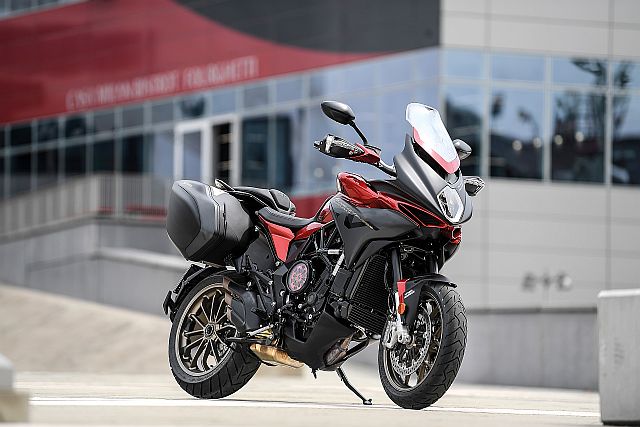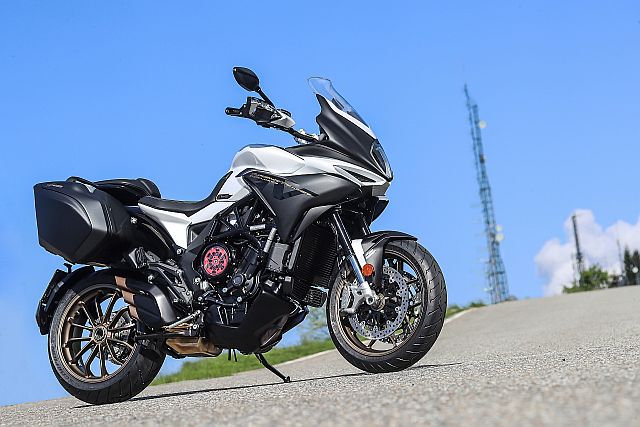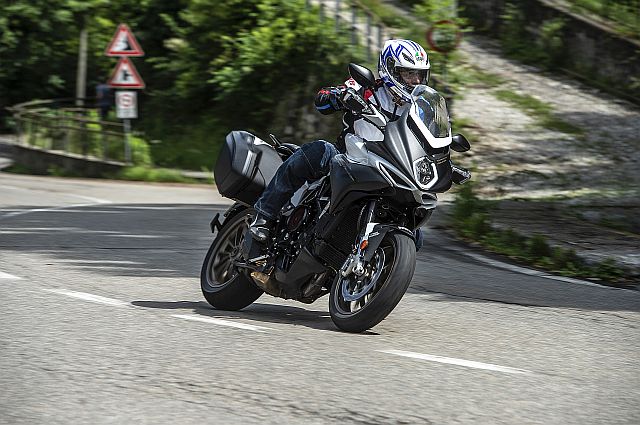‘The Fast Touring triple’s new star turn is the automatic clutch that gives it the full name of Turismo Veloce Lusso SCS, short for Smart Clutch System. The higher-spec Lusso (meaning “luxury”) model now comes with the option of an automatic clutch that means you don’t need to touch the lever.’ We rode both on the outskirts of MV’s home town of Varese.
Story: Roland Brown
Photography: Matteo Cavadini, Luigi Soldado & Marco Zamponi
Sports-tourers are generally designed to work best in situations ranging from blasting down a twisty road to cruising with pillion and luggage on a motorway. So, it’s slightly strange to find MV Agusta’s revamped Turismo Veloce highlighting its major new feature in a very different way: negotiating slow-moving traffic with unusual ease on the outskirts of MV’s home town of Varese in northern Italy.
That’s because the Fast Touring triple’s new star turn is the automatic clutch that gives it the full name of Turismo Veloce Lusso SCS, short for Smart Clutch System. The higher-spec Lusso (meaning “luxury”) model now comes with the option of an automatic clutch that means you don’t need to touch the lever, so can ride the MV almost like a big scooter in town, pulling away and changing gear without using your left hand.
The new clutch, developed in conjunction with US specialist Rekluse (who created the original system mainly as an anti-stalling device for off-road use) weighs only 36 grams more than a conventional clutch and is visible through a transparent cover on the right of the engine. The two firms collaborated on its design for MV’s application, working both in Varese and at Rekluse’s base in Idaho to fine-tune the system and incorporate the Turismo Veloce’s electronics.
Elsewhere the 12-valve powerplant is revamped in similar fashion to MV’s other triples, to improve its refinement and to get through Euro 4 with no loss of performance. The cylinder-head is revised to give more consistent combustion, for smoother low-rev running, and the starter clutch system is redesigned to cure a weakness of the original model.
The transmission is updated with new gears to allow smoother shifting and the front engine mount design is changed from one long bolt to two much shorter ones, increasing chassis stiffness. What doesn’t change is the power output, all the way to the maximum of 110 PS at 10,150 rpm.





Leave a Reply